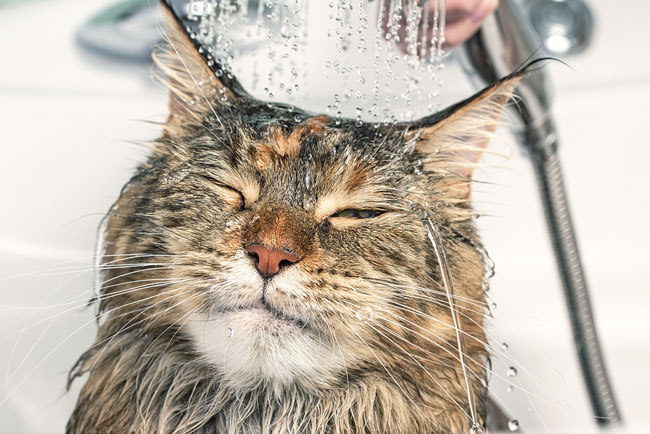How often should you bathe your cat? It’s a common question among cat owners, and the answer can vary depending on several factors. Discovering the appropriate frequency for bathing your feline friend is crucial to maintain their hygiene and overall well-being.
When determining the bathing schedule for your cat, there are a few factors to consider. Firstly, you should take into account your cat’s coat type. Cats with short hair generally require less frequent baths compared to those with long hair. Short-haired cats typically produce less oil and are adept at grooming themselves, while long-haired cats may need more assistance in keeping their fur clean and tangle-free.
Another factor to consider is your cat’s age. Kittens, for example, may not require frequent baths as they are still developing their grooming skills. Older cats, on the other hand, may benefit from regular bathing to help with any mobility issues or arthritis they may have.
The overall health condition of your cat is also an important consideration. If your cat has skin allergies or any skin conditions, your veterinarian may recommend a specific bathing schedule or prescribe medicated shampoos. It’s always best to consult with your vet for personalized advice.
Lastly, your cat’s lifestyle can influence how often they need to be bathed. Indoor cats who spend most of their time indoors and have minimal exposure to dirt and outdoor elements may require less frequent baths compared to outdoor cats who may get dirty more often.
In conclusion, there isn’t a one-size-fits-all answer to how often you should bathe your cat. It’s important to consider their coat type, age, health condition, and lifestyle when determining the appropriate bathing frequency. By understanding these factors and consulting with your veterinarian, you can ensure that your feline friend stays clean, healthy, and comfortable.
Frequency Based on Coat Type

For cats with long fur, it is generally recommended to bathe them every 4-6 weeks. This helps to prevent matting and keeps their fur looking and feeling its best. However, it is important to note that some cats may not enjoy being bathed and may become stressed or anxious. In such cases, it is best to consult with a veterinarian or a professional groomer for advice on the best bathing schedule for your cat.
For cats with short fur, bathing once every 8-12 weeks is usually sufficient. Short-haired cats are typically more adept at grooming themselves and may not require frequent baths. However, regular brushing is still important to remove loose fur and prevent hairballs.
To maintain your cat’s fur’s health and cleanliness, it is important to use a cat-friendly shampoo and conditioner specifically formulated for their coat type. Additionally, always ensure that the water temperature is lukewarm and never too hot or cold. After bathing, gently towel-dry your cat and provide a warm, comfortable environment for them to dry off completely.
Remember, every cat is unique, and their bathing needs may vary. It is important to observe your cat’s behavior and consult with a veterinarian if you have any concerns or questions regarding their bathing routine. By understanding your cat’s coat type and following the recommended bathing frequency, you can help keep their fur healthy, clean, and beautiful.
Factors to Consider

Age: The age of your cat plays a significant role in how often they should be bathed. Kittens, for example, have a tendency to get dirty more quickly and may require more frequent baths compared to adult cats. As cats age, their grooming habits become more efficient, and they may require less frequent baths.
Health Condition: The health condition of your cat is another important factor to consider. Cats with certain skin conditions or allergies may require more frequent baths to alleviate discomfort and maintain their skin’s health. On the other hand, cats with healthy skin and coat may not need to be bathed as often.
Lifestyle: The lifestyle of your cat can also influence their bathing schedule. Indoor cats who spend most of their time in a clean and controlled environment may require less frequent baths compared to outdoor cats who are exposed to dirt, allergens, and potential parasites. Additionally, cats who frequently engage in activities that make them dirty, such as exploring the outdoors or rolling in the mud, may need more regular bathing.
By considering these factors – age, health condition, and lifestyle – you can determine the optimal bathing frequency for your cat. It’s essential to strike a balance between maintaining their hygiene and ensuring their comfort, as excessive bathing can strip their fur of natural oils and cause skin dryness. Consulting with your veterinarian can also provide valuable insights and guidance on how often you should bathe your cat based on their specific needs.
